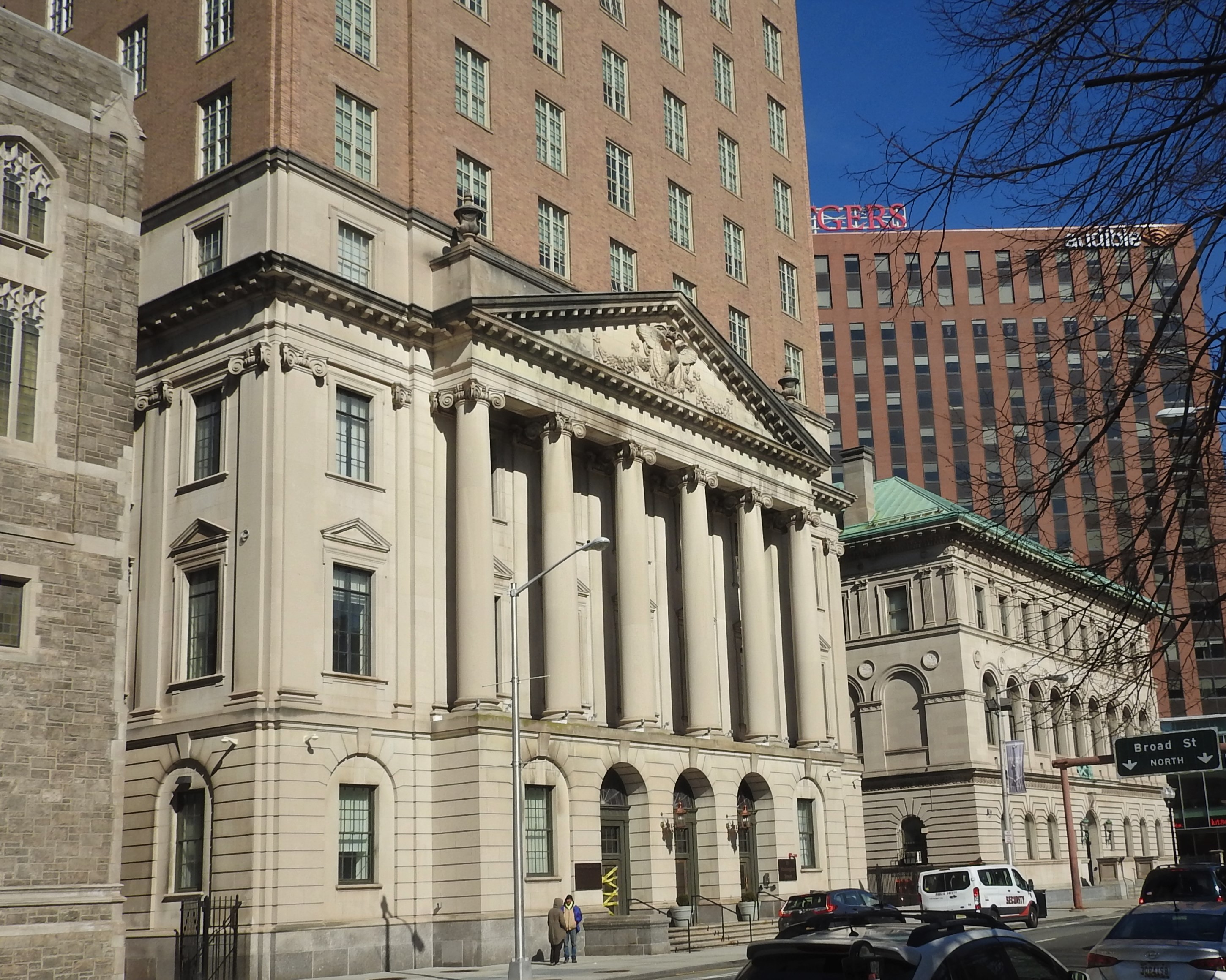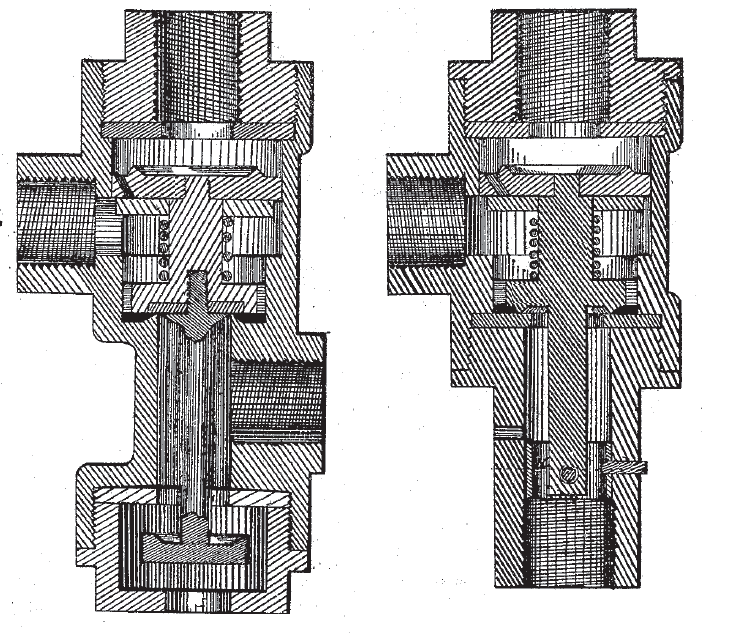|
James Street Commons Historic District
The James Street Commons Historic District is a historic district located in Newark, Essex County, New Jersey, United States. The district was added to the National Register of Historic Places on January 9, 1978, for its significance in architecture, art, community planning and development, education, industry, and social history. With There was a small boundary increase on September 22, 1983. With History and description When first surveyed in 1977 for landmark status, the district had 425 structures. Since then about 170 historic buildings in the district have been demolished, or about 40% of the district's urban fabric. When buildings are demolished, the predominant land use becomes surface parking. Rutgers University, Edison ParkFast, St. Michael's Hospital, and the New Jersey Institute of Technology are the main owners of surface parking lots and structures within the district. In 2020, the actions of NJIT president Joel Bloom with demolition of the nationally landmark ... [...More Info...] [...Related Items...] OR: [Wikipedia] [Google] [Baidu] |
Newark, New Jersey
Newark ( , ) is the most populous city in the U.S. state of New Jersey and the seat of Essex County and the second largest city within the New York metropolitan area.New Jersey County Map New Jersey Department of State. Accessed July 10, 2017. The city had a population of 311,549 as of the , and was calculated at 307,220 by the Population Estimates Program for 2021, making it [...More Info...] [...Related Items...] OR: [Wikipedia] [Google] [Baidu] |
Pro-Cathedral Of Saint Patrick In Newark
St. Patrick's Pro-Cathedral is a pro-cathedral of the Roman Catholic Church in the United States, located in Newark, New Jersey within the Archdiocese of Newark. It was added to the National Register of Historic Places on November 3, 1972, for its significance in architecture, art, religion, and social history. With It was added as a contributing property of the James Street Commons Historic District on January 9, 1978. Description Saint Patrick was built in 1846 and served as the seat of its prelate bishop from 1853 until the completion of the Basilica of the Sacred Heart. The red brick building features Gothic Revival architecture and a tall central tower with copper spire. The building has undergone extensive rehabilitation over the past fifteen years following years of declining membership. Several traditions remain, connecting the parish to its history as the "Old Cathedral" of Newark, including the 12:15 Ash Wednesday Liturgy with the Archbishop, the 12:15 Sunday Litur ... [...More Info...] [...Related Items...] OR: [Wikipedia] [Google] [Baidu] |
National Register Of Historic Places Listings In Essex County, New Jersey
List of the National Register of Historic Places listings in Essex County, New Jersey __NOTOC__ This is intended to be a complete list of properties and districts listed on the National Register of Historic Places in Essex County, New Jersey. The locations of National Register properties and districts (at least for all showing latitude and longitude coordinates below) may be seen in an online map by clicking on "Map of all coordinates". Historic resources in the Montclair, New Jersey area were surveyed in 1986, leading to a number of separate listings.. Former listings See also *National Register of Historic Places listings in New Jersey *List of National Historic Landmarks in New Jersey References {{Essex County, New Jersey * * Essex Essex () is a county in the East of England. ... [...More Info...] [...Related Items...] OR: [Wikipedia] [Google] [Baidu] |
Louis Bamberger
Louis Bamberger (15 May 1855 – 11 March 1944) was the leading citizen of Newark, New Jersey, from the early 1900s until his death in 1944. He and his sister Caroline Bamberger Fuld co-founded the Institute for Advanced Study in Princeton, New Jersey. He was a businessman and philanthropist and at his death all flags in Newark were flown at half-staff for three days, and his large department store closed for a day. Early life Louis Bamberger was born in 1855 to a German Jewish family in Baltimore, Maryland, the son of Theresa (née Hutzler) and Elkan Bamberger. His mother belonged to the family that ran Hutzler Brothers in Baltimore. His grandfather was Moses Hutzler. He had six siblings: Caroline Bamberger Fuld; Clara "Lavinia" Bamberger; Rosa Bamberger; Julius Bamberger; Pauline Bamberger; and Julia Bamberger. Bamberger's He came to Newark in 1892 and bought at auction a failing general goods store on Market Street, renaming it L. Bamberger & Company, with his partner ... [...More Info...] [...Related Items...] OR: [Wikipedia] [Google] [Baidu] |
Thomas Edison
Thomas Alva Edison (February 11, 1847October 18, 1931) was an American inventor and businessman. He developed many devices in fields such as electric power generation, mass communication, sound recording, and motion pictures. These inventions, which include the phonograph, the motion picture camera, and early versions of the electric light bulb, have had a widespread impact on the modern industrialized world. He was one of the first inventors to apply the principles of organized science and teamwork to the process of invention, working with many researchers and employees. He established the first industrial research laboratory. Edison was raised in the American Midwest. Early in his career he worked as a telegraph operator, which inspired some of his earliest inventions. In 1876, he established his first laboratory facility in Menlo Park, New Jersey, where many of his early inventions were developed. He later established a botanical laboratory in Fort Myers, Florida, in co ... [...More Info...] [...Related Items...] OR: [Wikipedia] [Google] [Baidu] |
Edward Weston (chemist)
Edward Weston (May 9, 1850 – August 20, 1936) was an English-born American chemist and engineer noted for his achievements in electroplating and his development of the electrochemical cell, named the Weston cell, for the voltage standard.History of Weston Aerospace , Weston – the Man (1850-1936) Weston was a competitor of in the early days of electricity generation and distribution.Edward Weston (1850-1936) . Corrosion Doctors Biography Born in |
Stephen Crane
Stephen Crane (November 1, 1871 – June 5, 1900) was an American poet, novelist, and short story writer. Prolific throughout his short life, he wrote notable works in the Realist tradition as well as early examples of American Naturalism and Impressionism. He is recognized by modern critics as one of the most innovative writers of his generation. The ninth surviving child of Methodist parents, Crane began writing at the age of four and had several articles published by the age of 16. Having little interest in university studies though he was active in a fraternity, he left Syracuse University in 1891 to work as a reporter and writer. Crane's first novel was the 1893 Bowery tale '' Maggie: A Girl of the Streets'', generally considered by critics to be the first work of American literary Naturalism. He won international acclaim in 1895 for his Civil War novel '' The Red Badge of Courage'', which he wrote without having any battle experience. In 1896, Crane endured a high ... [...More Info...] [...Related Items...] OR: [Wikipedia] [Google] [Baidu] |
Elvin W
{{disambiguation ...
Elvin may refer to: * Elvin (given name) * Elvin (surname) * Elvin (service), a distributed event routing service * '' Elvin!'', a 1968 album by Elvin Jones See also * * * Alvin (other) * Elfin (other) * Elvan (other) * Elven (other) Elven may refer to: * The adjectival form of Elf, in particular: ** Elven (comics), a 1994 four issue comic book written by Len Strazewski and drawn by Aaron Lopresti ** ''Elven Legacy'', a 2009 PC video game ** Elvish languages (Middle-earth), E ... [...More Info...] [...Related Items...] OR: [Wikipedia] [Google] [Baidu] |
Peter Ballantine
Peter Ballantine (November 16, 1791 – January 23, 1883) was the founder of Patterson & Ballantine Brewing Company in 1840 in Newark, New Jersey, United States. Early life He was born on November 16, 1791, in Dundee, Scotland. He decided to leave Scotland due to the "pressure of poverty and the call to great achievement." Career In 1820, Ballantine emigrated to Albany, New York where he learned brewing. By 1830, he had established his own brewery there. In 1840, he moved to Newark, New Jersey, and partnered with Erastus Patterson to form P. Ballantine and Sons Brewing Company, and leased the old High Street Brewery that had been built in 1805 by John R. Cumming. In 1845, Ballantine pulled out of the partnership, and, five years later, built his own brewery on the Passaic River, known as P. Ballantine and Sons Brewing Company. In 1857, he took his sons as partners, and he became the wealthiest man in Newark. Personal life In 1830, Ballantine married Julia Wilson (1796–18 ... [...More Info...] [...Related Items...] OR: [Wikipedia] [Google] [Baidu] |
John Cotton Dana
John Cotton Dana (born August 19, 1856, in Woodstock, Vermont – died July 21, 1929, in Newark, New Jersey) was an American library and museum director who sought to make these cultural institutions relevant to the daily lives of citizens. As a public librarian for forty years Dana promoted the benefits of reading, pioneered direct access to shelved materials, and innovated specialized library services of all types. Biography Dana studied law at Dartmouth College, where he graduated in 1878. Moving to Denver in 1880, Dana passed the Colorado bar and began to practice. Dana moved to New York and was admitted to the bar in 1883. Taking a position as the editor of the ''Ashby Avalanche'' in 1885, Dana moved to Minnesota but resettled in Colorado after a short time. Dana married in 1888 to Adine Rowena Wagener. They had no children. Because of the reputation he cultivated as a learned man and his connections in the Denver Public Schools, the superintendent Aaron Gove nomina ... [...More Info...] [...Related Items...] OR: [Wikipedia] [Google] [Baidu] |
George Westinghouse
George Westinghouse Jr. (October 6, 1846 – March 12, 1914) was an American entrepreneur and engineer based in Pennsylvania who created the railway air brake and was a pioneer of the electrical industry, receiving his first patent at the age of 19. Westinghouse saw the potential of using alternating current for electric power distribution in the early 1880s and put all his resources into developing and marketing it. This put Westinghouse's business in direct competition with Thomas Edison, who marketed direct current for electric power distribution. In 1911 Westinghouse received the American Institute of Electrical Engineers's (AIEE) Edison Medal "For meritorious achievement in connection with the development of the alternating current system." Early years George Westinghouse was born in 1846 in Central Bridge, New York (see George Westinghouse Jr. Birthplace and Boyhood Home), the son of Emeline (Vedder) and George Westinghouse Sr., a machine shop owner. His ancestors came fro ... [...More Info...] [...Related Items...] OR: [Wikipedia] [Google] [Baidu] |
Seth Boyden
Seth Boyden (November 17, 1788 – March 31, 1870) was an American inventor. Early life He was born in Foxboro, Massachusetts, on November 17, 1788, the son of Seth Boyden and Susannah Atherton. His father was a farmer and blacksmith. His younger brother was Uriah A. Boyden. Career He worked as a watchmaker and moved to Newark, New Jersey. Boyden perfected the process for making patent leather, created malleable iron, invented a nail-making machine, and built his own steamboat. He is also credited with having invented a cut off switch for steam engines and a method for producing zinc from ore. At the time of his death, he told friends that he had, even at that time, enough experiments on hand to last two whole lifetimes."Birthday Banquet Recalls Genius," ''Nation's Business,'' April 1926, pg. 70 In 1818, Boyden received a piece of German manufactured high-gloss leather (said to be a German military cap front) from a local carriage manufacturer and used that to investigate t ... [...More Info...] [...Related Items...] OR: [Wikipedia] [Google] [Baidu] |




